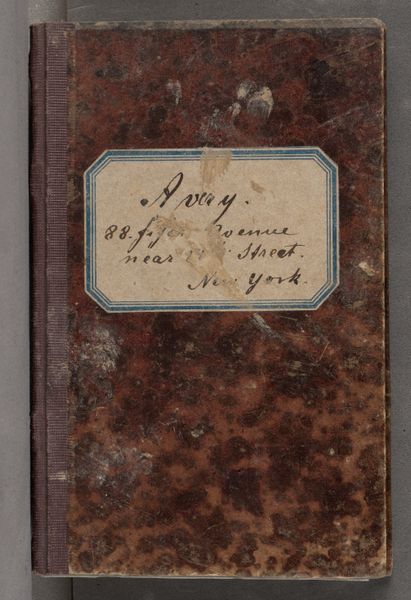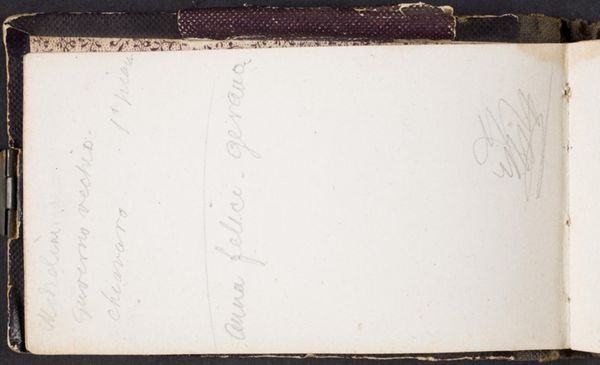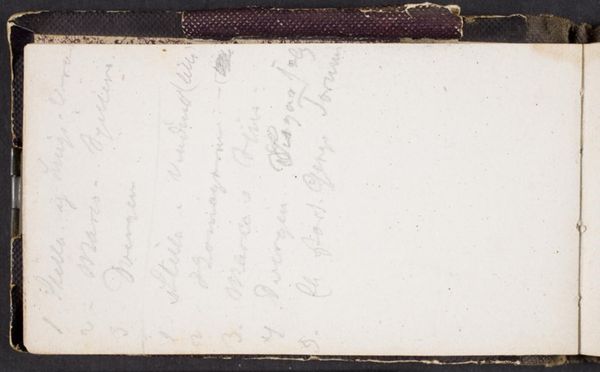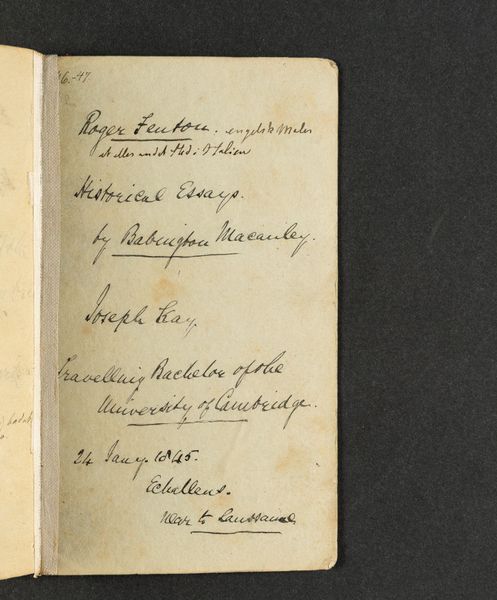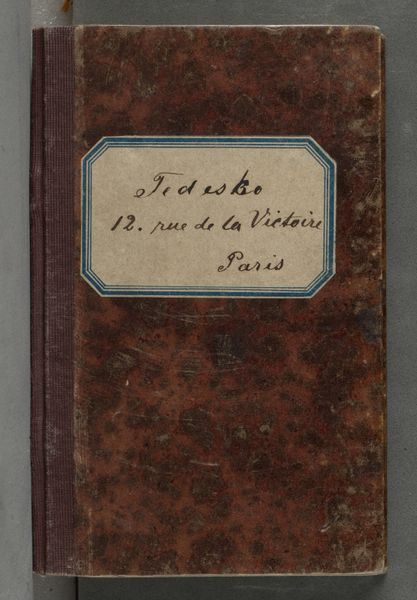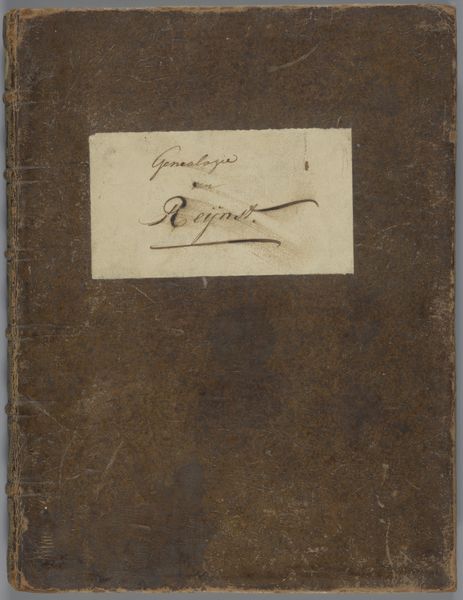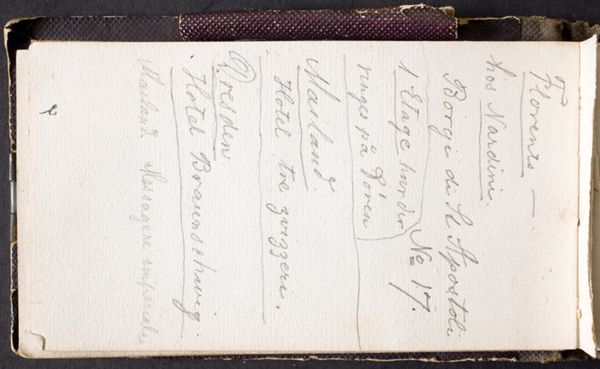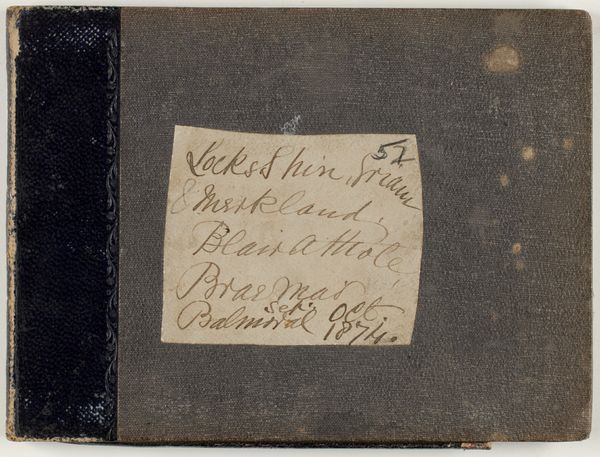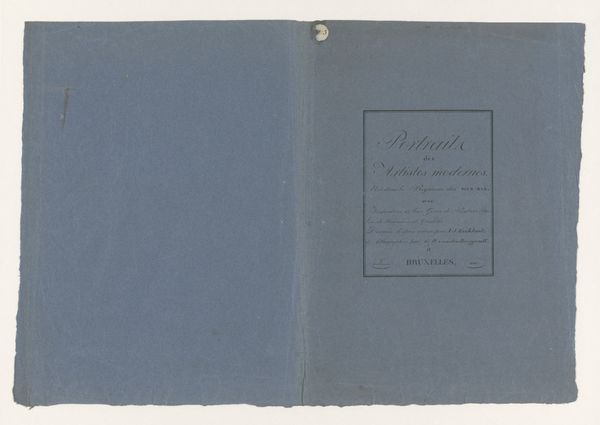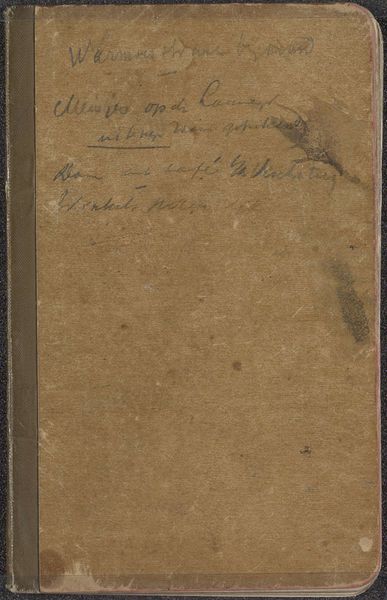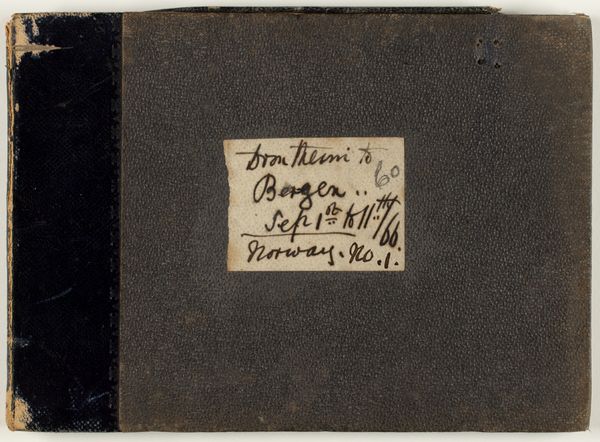
Verzeichnis der Werke für François Petit, Paris und Williams & Everett, Boston 1866 - 1874
0:00
0:00
Copyright: Public Domain
Editor: So, this unassuming object is titled "Verzeichnis der Werke für François Petit, Paris und Williams & Everett, Boston," created by Adolf Schreyer between 1866 and 1874. It's a colored pencil drawing. Initially, I’m struck by its mundanity – it looks like a well-worn notebook. What leaps out at you? Curator: It whispers secrets, doesn't it? Look closer. A catalogue of works destined for Paris and Boston… Schreyer, known for his romantic depictions of exotic locales, funneling his art into the global art market of the 19th century. Can you imagine what sketches might be hiding within those pages? Which paintings? Maybe battle scenes or Bedouin encampments rendered in vibrant hues? Editor: Oh, I hadn't considered the implications of the title itself! It’s like a tiny portal connecting his studio to these major art hubs. How does knowing it was for an art dealer and gallery change your perspective on it? Curator: Immensely! It transforms this notebook into a key piece of evidence. Not just a list, but a ledger, marking the movement of culture, and Schreyer's place within that economy. Was he wrestling with artistic integrity versus commercial pressures, do you think? Was this freedom, or a gilded cage? Editor: That’s fascinating – a gilded cage! It makes me think about the tension many artists face, even today. I hadn't initially considered it a history painting at all. Curator: And now? Does it shift for you? Editor: Definitely. It’s not a depiction of a historical event, but it's a historical artifact *itself*, whispering tales of artistic ambition and the machinery of the art world. Thanks, that gives me so much more to consider! Curator: Precisely! That little unassuming book? It's a story begging to be told! Now, off we go to decipher the next puzzle!
Comments
stadelmuseum about 2 years ago
⋮
Among the approximately 120 sketchbooks kept in the Städel Museum, Adolf Schreyer’s eight little books occupy a special position (Inv. SG 3080 to SG 3087). Unlike the other artists represented in the collection, who used their books on journeys and hikes or in their studios to record what they had seen and prepare compositions, Schreyer used his books as sales and work catalogues. In them, he listed the key data of completed transactions and documented his own works, which he had sent to various art dealers ‒ purely for personal reference.In seven of the eight books, Schreyer recorded in the 1860s and 1870s only those works that were for sale at a particular art dealer ‒ in this case two. To this end, he sketched out his own compositions and made brief notes on the information about the works and sales. In addition to the work for the Paris-based art dealers François Petit and the Boston-based Williams & Everett, to which this book was dedicated, there are such directories for the also in Paris based dealers Goupil & Cie (SG 3081) and Tedesco (SG 3084), the London-based Ernest Gambart (SG 3080), the Berlin-based Rudolph Lepke (SG 3082), as well as the New York-based William Schaus (SG 3083) and Samuel Putman Avery (SG 3086). In keeping with Schreyer’s specialisation in depictions of horses and riders in mainly Eastern European and North African landscapes, the compositions sketched in the seven books show exclusively riders ‒ Cossacks, Walachians, Arabs etc. ‒ on horses or in sleighs and carriages drawn by horses.In an eighth book, Schreyer listed more than 600 works which he sold over a period of nearly four decades to private individuals, art associations and various gallery owners, including most of the art dealers mentioned above (SG 3087). Although he did not make any sketches of the pieces he included in this comprehensive book of sales, the titles of the works reveal that most of them were also depictions of riders.The sales book with the works for François Petit and Williams & Everett is the only one of the seven books with drawings that documents Schreyer’s collaboration with two dealers. He first used it between 1866 and 1870 to record five works sold through Petit, and continued to use it in 1873/74 to record two paintings that went to Williams & Everett. As mentioned above, he drew reproductions of the sold compositions in pencil and noted the year and usually the month of sale as well as a descriptive short title above his sketches. Repeatedly, he also noted the dimensions of the respective painting. He rendered his compositions with quick and confident strokes, sometimes more or less simplified, but generally realised his drawings sufficiently to give a fairly accurate idea of the painting in question. Often, he also briefly noted the weather or time of day.This procedure enabled Schreyer, on the one hand, to maintain an overview of the works that had been sold, which are often very similar in terms of their pictorial content and structure. On the other hand, it made it easier for him to remember the sold compositions more precisely at a later date and, if necessary, to reuse or vary them for other customers. That this occasionally happened is indicated by a note above a composition for François Petit, in which Schreyer referred to a work that he had listed two years previously in the book of sales of paintings for Ernest Gambart and had now “changed / for Petit” (see sheet 2r and SG 3080, sheet 12v).The seemingly natural conclusion that the cooperation with both dealers was unproductive and of comparatively short duration, given the small number of works listed, is invalid, at least as far as Williams & Everett is concerned. The extensive sales book (SG 3087) shows that the Boston dealers regularly bought works from him until well into the 1880s.For a full sketchbook description, please see “Research”.
Join the conversation
Join millions of artists and users on Artera today and experience the ultimate creative platform.
